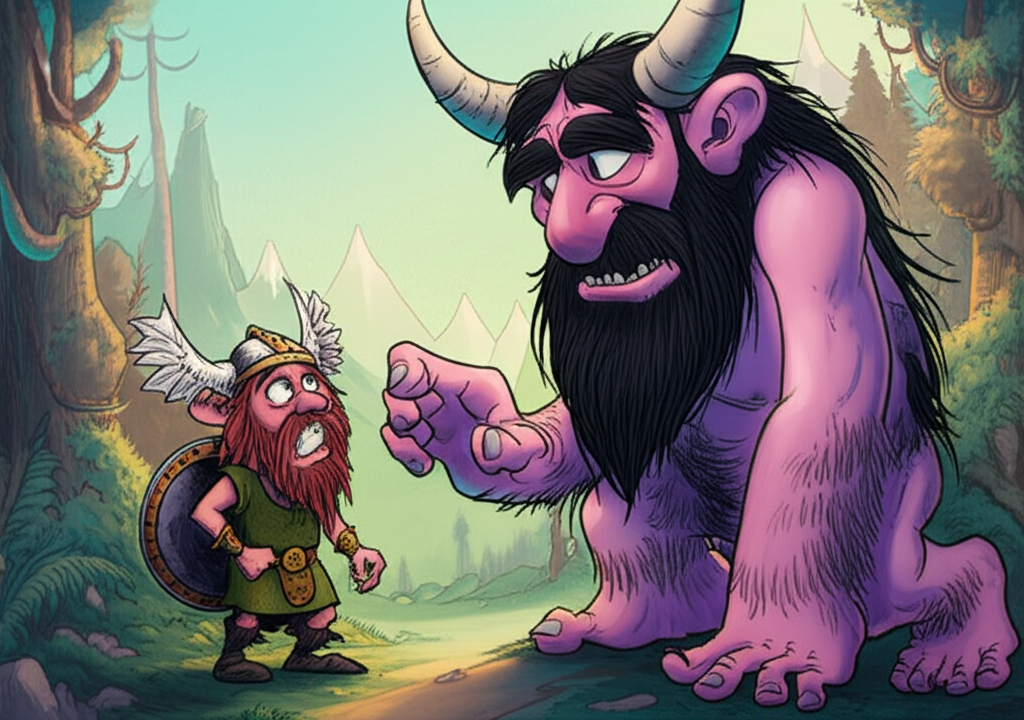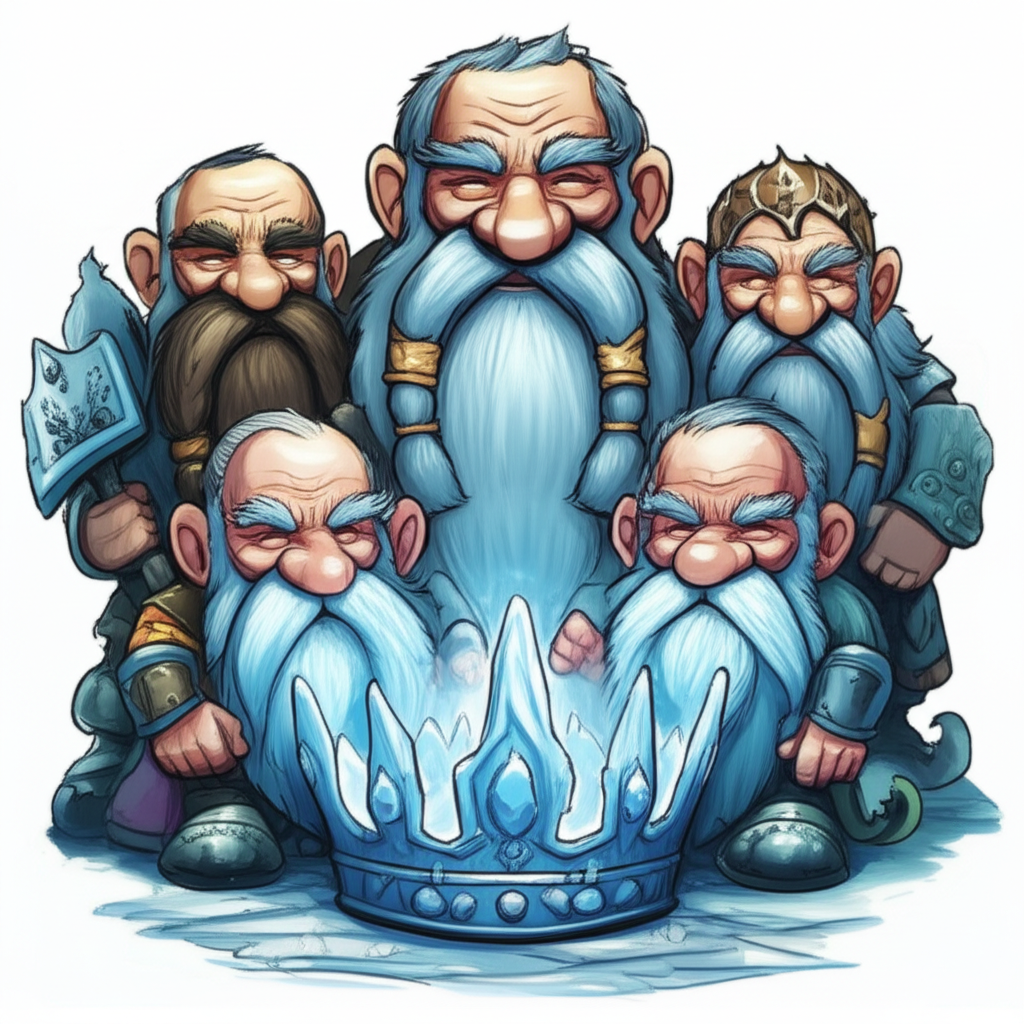
1. Introduction
In the frost-kissed lands of ancient Scandinavia and among the Germanic peoples of Northern Europe, a rich tapestry of stories was woven to explain the cosmos and the human condition. Among these tales, none is perhaps as pivotal to understanding the divine conflicts and the very structure of the afterlife as the narrative of the Aesir–Vanir War and the subsequent origins of Helheim. This is not a historical account of real events, nor is it a sacred text to be worshipped or practiced. Rather, it is a traditional story, a myth passed down through generations, offering a glimpse into the imagination and worldview of a pre-Christian society that sought to find meaning in the mysteries of life, death, and the forces that shaped their world.
2. Origins and Cultural Background
These myths flourished in a cultural era often associated with the Viking Age, though their roots delve much deeper into the Iron Age and beyond. The people who shared these narratives were often farmers, seafarers, and warriors, living in a landscape of stark contrasts: fertile valleys and unforgiving mountains, long summer days and harsh, dark winters. Their lives were intimately connected to the cycles of nature, the strength of their communities, and the unpredictable forces of the sea and sky.
For these ancient people, the world was not merely a physical space but a complex cosmology of nine interconnected realms, all held together by the mighty World Tree, Yggdrasil. Life was seen as a journey often intertwined with fate, honor, and courage. Death held multiple meanings; a glorious end in battle might lead to Valhalla, the hall of Odin, or Folkvangr, Freya’s field, while a death by sickness or old age was understood to lead elsewhere. This intricate understanding of the afterlife and the divine pantheon was integral to their cultural identity, shaping their values, their art, and their understanding of their place in the grand, often turbulent, cosmic order.
3. Character Description: Hel, the Ruler of Shadows
Central to the story of Helheim’s origins is the enigmatic figure of Hel, the grim ruler of this underworld realm. According to the ancient Norse myths, Hel was one of the three monstrous children born to the trickster god Loki and the giantess Angrboða. Unlike her siblings, the colossal wolf Fenrir and the World Serpent Jörmungandr, Hel’s appearance was uniquely unsettling and symbolic. She was described as having a dual nature: one half of her body was that of a living, beautiful woman, while the other half was decayed, discolored, and corpse-like, reflecting the pallor of death.
Hel’s symbolic attributes are profound. Her divided form represents the inescapable duality of life and death, beauty and decay, that underpins existence. She is not evil in the conventional sense, but rather a representation of the inevitable end that awaits all beings, regardless of their station. Her realm, Helheim, is not a place of torment for the wicked, but rather a cold, shadowy abode for the vast majority of the deceased – those who did not die a glorious warrior’s death. She embodies the stillness, the finality, and the often unglamorous reality of mortality, serving as a stark counterpoint to the vibrant halls of Valhalla.
4. Main Story / Narrative Retelling: The First War and a Grim Banishment
The ancient sagas recount a time before the full establishment of the Aesir’s dominance, when two powerful tribes of divine beings – the Aesir and the Vanir – existed. The Aesir, led by Odin, were primarily associated with war, wisdom, and kingship, while the Vanir, including Njörðr, Freyr, and Freya, were revered for their connection to fertility, wealth, and magic.
The conflict began, the myths tell, with the arrival of a mysterious sorceress named Gullveig in Asgard, the realm of the Aesir. Gullveig, often identified with the goddess Freya, possessed an intoxicating allure and a potent form of magic known as seidr, which she used to stir greed and discord among the Aesir. Unnerved by her influence and the unsettling power of her magic, the Aesir made a drastic decision. They seized Gullveig, impaled her with spears, and tried to burn her three times in Odin’s hall. Yet, each time, she rose from the ashes, renewed and more beautiful than before, embodying the resilience of magic and the spirit she represented.
This brutal act was seen as a grave insult by the Vanir, who felt their kinswoman had been unjustly attacked. Their outrage ignited the first great war of the cosmos. The Vanir, skilled in magic and the forces of nature, marched on Asgard. The Aesir, masters of strategy and battle, met them with equal fury. The clash was cataclysmic; the very walls of Asgard, built to be impregnable, were breached, and the nine realms trembled. For a long time, neither side could claim a decisive victory. The battles raged, leaving destruction in their wake, until both sides recognized the futility of endless conflict.
A truce was proposed, leading to an exchange of hostages to seal the peace. The Vanir sent their most esteemed: the wise sea-god Njörðr and his children, the fertile god Freyr and the beautiful goddess Freya, mistress of love, war, and magic. In return, the Aesir offered the wise Hœnir and the ancient, all-knowing Mímir. However, suspicion lingered. The Vanir, distrusting Hœnir’s perceived lack of true wisdom, grew resentful and ultimately beheaded Mímir, sending his head back to Odin. Odin, ever the seeker of knowledge, preserved Mímir’s head with herbs and spells, placing it by a well in Jötunheimr where it continued to offer counsel. Despite this grim turn, the peace held, and the two tribes began to intermingle, their powers and traditions enriching the divine pantheon.
It was in the aftermath of this great cosmic war, or perhaps even concurrent with the tensions that led to it, that the fates of Loki’s extraordinary children were sealed. The Aesir, already wary of Loki’s deceptive nature, looked upon his offspring with growing apprehension. Fenrir, the monstrous wolf, grew so large and fierce that only the god Týr dared to feed him. Jörmungandr, the Midgard Serpent, encircled the entire world in the ocean’s depths. And then there was Hel, with her unsettling dual form.
Fearing the destructive potential of these beings, Odin, the Allfather, decreed their banishment. He cast Jörmungandr into the vast ocean, where it grew to encircle the world. Fenrir, after much trickery, was bound by an unbreakable magical chain. And for Hel, Odin banished her to the cold, misty depths of Niflheim, a desolate realm far to the north, granting her dominion over a specific domain within it: Helheim. There, she was given the task of receiving all those who died of sickness, old age, or any death that was not glorious in battle. Thus, Helheim became the designated realm for the vast majority of humanity, a shadowy counterpart to the warrior’s paradise.
5. Symbolism and Meaning
The Aesir–Vanir War is rich with symbolism. To the ancient Norse, it may have represented the integration of different cults or belief systems – perhaps the merging of an older, fertility-focused religion (Vanir) with a newer, warrior-centric one (Aesir). It speaks to the necessity of balance and diplomacy, even among divine powers, suggesting that conflict, however destructive, can ultimately lead to a more complete and integrated understanding of the world. The exchange of hostages and the eventual blending of the tribes symbolize cultural exchange and the enrichment that comes from incorporating diverse perspectives, including the introduction of seidr magic into Asgard.
Hel and Helheim, on the other hand, represent a profound meditation on mortality. Her dual nature symbolizes the inevitable decay and stillness of death, reminding all that life’s vibrancy is temporary. Helheim itself is not necessarily a place of punishment, but rather a stark, cold reality—a reminder that not all deaths are glorious or heroic. It embodies the concept of a common, universal end that awaits all beings, regardless of their deeds. It provided a framework for understanding and accepting the natural cycle of life and death, offering a destination for the departed that was neither the heroic Valhalla nor a place of eternal damnation. It spoke to the ordinary experience of death, giving it a place and a ruler within their complex cosmology.
6. Modern Perspective
Today, the tales of the Aesir–Vanir War and the grim realm of Helheim continue to resonate, interpreted through various modern lenses. In literature, Norse mythology provides a rich source for fantasy novels, such as Neil Gaiman’s "American Gods" or Rick Riordan’s "Magnus Chase and the Gods of Asgard," which reimagine these ancient figures and their conflicts for contemporary audiences. Movies, particularly Marvel’s "Thor" franchise, have brought characters like Hela (their interpretation of Hel) to global prominence, albeit with significant creative liberties, transforming her into a formidable antagonist.
Video games, too, frequently draw upon these myths. Titles like "God of War" and "Assassin’s Creed Valhalla" immerse players in stylized versions of the Nine Realms, often featuring Helheim as a distinct and eerie level or an entire domain to explore. Culturally, these stories are studied in academia for their insights into ancient religions, folklore, and the human impulse to create narratives that explain existence. They serve as a testament to the enduring power of storytelling, demonstrating how ancient beliefs can continue to inspire and provoke thought in an entirely different era.
7. Conclusion
The narrative of the Aesir–Vanir War and the establishment of Helheim is a profound cultural story, a product of human imagination seeking to comprehend the vastness of the cosmos and the mysteries of life and death. It is important to reiterate that this is a myth, a traditional tale from ancient times, and not a belief system to be adopted or practiced. As Muslims, we recognize that Allah (SWT) alone is the true Creator and Sustainer of all existence, the One who holds dominion over life and death, and to whom all return.
Nevertheless, these ancient narratives offer invaluable insights into the cultural heritage of humanity. They reflect our ancestors’ attempts to grapple with fundamental questions, to imbue the world with meaning, and to pass down wisdom through generations. The enduring power of these myths lies not in their literal truth, but in their capacity to inspire imagination, foster cultural understanding, and remind us of the universal human quest for meaning and connection through the timeless art of storytelling.





